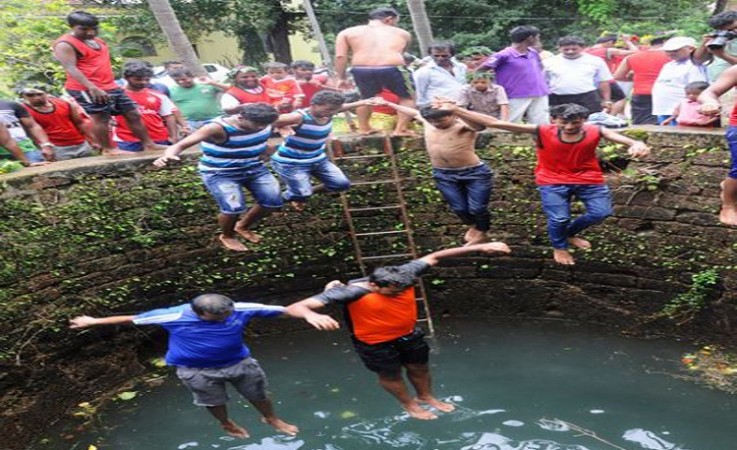
GOA: Thousands of Goans celebrated the feast of St. John the Baptist by jumping into bodies of water and taking part in Sao Joao festivities. People participated in the celebrations by jumping into wells and ponds while singing traditional Konkani songs and wearing flower-adorned caps known as "kopels."
Sao Joao, a vibrant and joyous festival celebrated by the Goan community, is eagerly awaited every year on June 24th. This unique festival holds deep cultural significance and is observed with great enthusiasm across the coastal state of Goa, India. Known for its colorful traditions and lively festivities, Sao Joao brings together locals and tourists alike to revel in the spirit of merriment and camaraderie.
The roots of Sao Joao can be traced back to the Christian faith, as it commemorates the nativity of St. John the Baptist. However, over time, the festival has assimilated elements from various traditions, making it a truly multicultural celebration. Sao Joao also coincides with the arrival of the monsoon season in Goa, which adds to the festive ambiance and gives the celebration a unique flavor.
The festival begins with a ceremonial mass held in churches across the state, where devotees gather to offer prayers and seek blessings. Following the religious observances, the real fun begins as people take to the streets and water bodies to engage in lively festivities. One of the distinguishing features of Sao Joao is the tradition of jumping into wells, ponds, and rivers. It is believed that by taking the plunge, one can wash away their sins and seek good fortune for the coming year.
The revelers, predominantly young men, participate in the daring sport of cliff diving. They dive into the swirling monsoon waters from rocky cliffs and demonstrate their prowess and bravery. This thrilling activity attracts a large crowd of spectators who cheer and applaud the divers. It is an exhilarating sight to behold as these young men showcase their acrobatic skills while embracing the spirit of Sao Joao.
Colorful floats, adorned with flowers and streamers, are a prominent feature of the festival. These floats, known as sangodds, are creatively decorated and carried by young men who move from one house to another. Accompanied by vibrant music and dance, they visit relatives, friends, and neighbors, spreading joy and extending warm wishes. The hosts offer traditional Goan delicacies and a refreshing drink known as "soro," which is made from coconut milk and spices, to the visitors.
The festivities continue late into the evening with cultural programs, traditional Goan music, and dance performances. The streets come alive with the beats of folk music and the rhythmic steps of the traditional "manddo" dance. People dress in vibrant attire, with women adorning colorful sarees and floral tiaras, while men sport the traditional dhoti-kurta. This amalgamation of music, dance, and traditional costumes creates a lively atmosphere that reflects the true essence of Goan culture.
Sao Joao is not just limited to the Christian community; it is a festival that transcends religious boundaries and unites people from different backgrounds. It showcases the inclusive nature of Goan society, where people from various faiths and cultures come together to celebrate and appreciate each other's traditions.
In recent years, Sao Joao has gained popularity among tourists, who flock to Goa to witness and participate in the festivities. The state government and local authorities have taken steps to promote the festival, ensuring that it continues to thrive and evolve while preserving its cultural significance.
Sao Joao festival, celebrated on June 24th, is a testament to the vibrant spirit of Goans and their rich cultural heritage. It is a time of joy, unity, and fervor, where people come together to embrace their traditions, strengthen bonds, and create lasting memories. Whether you are a local or a visitor, Sao Joao offers an unforgettable experience that truly captures the essence of Goa's vibrant and welcoming spirit.